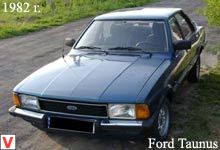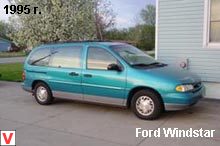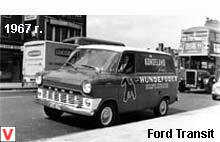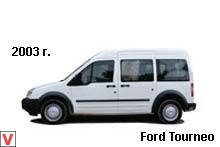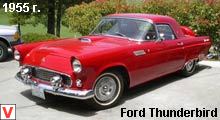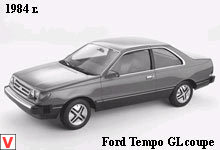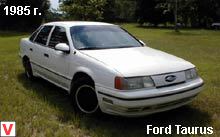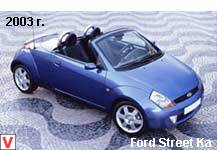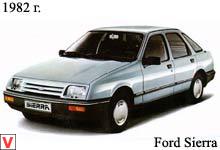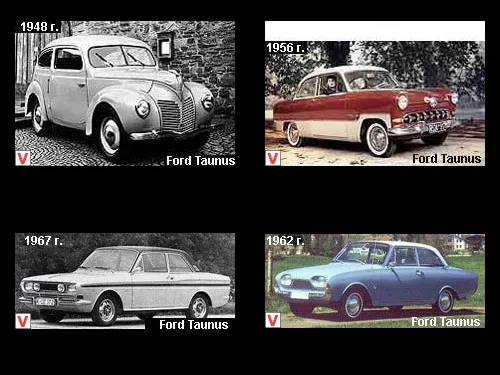
The history of the car begins with the pre-war model of the 1939 Taunus. It was produced in the form of a 2-door sedan with a 34 hp engine. and was equipped with a falling-flow Solex 26 FI carburetor. The modified Taunus Spezial model had a gear shift on the steering column. The maximum speed of the car reached 105 km / h.
Before the war, not a very large number of cars were produced. The post-war Taunus model of 1948, was nicknamed the “Hunchback” for its bizarre rear shape. The engine was a 1.2-liter engine. In 1952, the model has undergone modernization and has received the name "Taunus 12M". The power of this car was 38 hp at 4250 rpm, it was enough to accelerate to 100km / h in 35 seconds. Taunus produced in the 2-door body type sedan or convertible. In 1953, a station wagon appeared. Began to install 3-speed gearbox, by 1957 it received synchronizers of all gears.
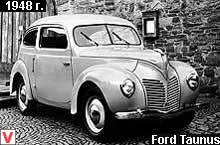
In 1954, as an option, a 4-speed gearbox appeared. In 1955, the "Taunus 15M" was outfitted with a 1.5-liter power unit. with camshaft. The maximum speed of the car was 130 km / h. In 1957, a new model of a higher class than the “Taunus 15M”, the Ford “Taunus 17M”, appeared.
This car had a 1.7-liter engine with 60 hp. The car was equipped with a MacPherson type suspension. The rear suspension on semi-elliptical springs had telescopic shock absorbers. Produced body type sedan and wagon. In 1959, the model "Taunus 12M" was updated. The shape of the hood has become more simple, turn signals are now placed on the grille and the number of moldings has increased markedly.
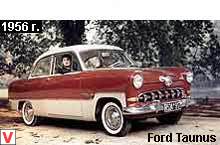
In the technical part, only the engine has changed: instead of the former 1.2 liter, a new 1.5 liter was installed. In October 1960, the "Taunus 17M" received a new aerodynamic body shape, called the "bath". The car was equipped with V4 engines (1.2 and 1.5 liters capacity and 40, 50 and 65 hp).
Installed 4-speed synchronized gearbox. A distinctive feature of this model is the use of front-wheel drive for the first time for Ford. In 1963, Taunus began installing heating and ventilation systems. By this time, the car was produced with sedan-type bodies (2/4 doors) and a station wagon (4 doors). It was released 520,000 cars.

In 1964, a new line of models Taunus 17M / 20M. Installed engines V4 (1.5 l / 60 hp), (1.7 l / 65 and 70 hp), V6 (2.0 l / 85 and 90 hp). On model 17 M 3 and 4 high-speed gearboxes were installed, on 20M only 4 speed ones. Rear-wheel drive, MacPherson-type front suspension.
Produced body type sedan, combi and 2-door coupe. In 1967, an updated version of Taunus appeared. The gamma of power units was replenished: V6 2.3 l / 125 hp / 5500 rpm and V6 2.5 l / 125 hp / 5300 rpm. The 2.6 engine was standardized with an automatic transmission, but it was possible to order a 5-speed manual.

In 1970, coupe cars appeared in the model range of Taunus. Begin to install modern 4-cylinder engines with overhead camshaft driven by a timing belt. At that time, the timing belt was not common in the global automotive industry. At the same time, the European branch of Ford has designed a new bearing body. Its length was 1700 mm, and the height of 1362 mm, this ratio of height and width made the silhouette of the car squat. Accordingly, in comparison with the previous generation, the wheelbase has also increased.
The company offered several versions of the model Taunus. The greatest interest was the modification of the GT. Cars of this modification, in addition to the reinforced suspension and anti-roll bar on the rear axle, had a characteristic instrument panel, additional devices were placed on the console. The console turned into a drawer located between the seats above the handbrake handle. In the car were installed seats, the headrest which was made as one piece with the seat back. Coupe models differed by the characteristic bevel of the rear part of the roof, but also by the fact that it was lower than on other Taunus. The road was lit with two rectangular and two round extra lights.
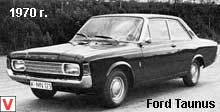
In total there were 35 versions of different configurations with different engines. The use of curved side windows without vent windows in the design of the car was made possible by the use of an efficient ventilation and heating system. The heater radiator was located in the engine compartment. Thanks to this arrangement, the temperature in the cabin was regulated only by the intensity of the air flow. In 1973, Taunus was restyled: the instrument panel was changed, and square headlights were installed under halogen lamps.
In the first years of production, this model was a great success, but by the mid-1970s, the requirements for the car changed significantly, and in January 1976, the new generation of Taunus cars came in place, substantially redesigned both in design and in a number of technical solutions. The design of the body has been significantly redesigned, becoming even simpler and more severe. Rubber pads appeared on the bumpers, the plastic grille was installed with a fashionable then negative slope, and the headlights became rectangular. Taunus offered in trim levels: Standart, L, CL, GL, S and Ghia.
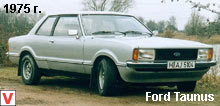
Gasoline engines of the Kent and Pinto families with volumes ranging from 1.3 to 2.3 liters (from 54 to 107 hp) were installed on the car. Most Taunus were equipped with mechanical gearboxes, but an automatic transmission could also be installed on the top Ghia modification. In 1979, the latest generation of Taunus appears. First of all, the changes affected the appearance of the car: the headlights with turn indicators widened, the shape of the rear lights and the bumper changed. Produced body type sedan (2/4 door) and station wagon. Installed gasoline engines in volume from 1.3 to 2.3 liters (from 58 to 114 hp).
By the way, Taunus is obliged by its name to the famous hill near Cologne, where the central office and the largest European factory Ford are located.
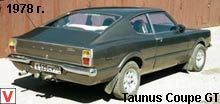
Other images auto Ford Taunus
